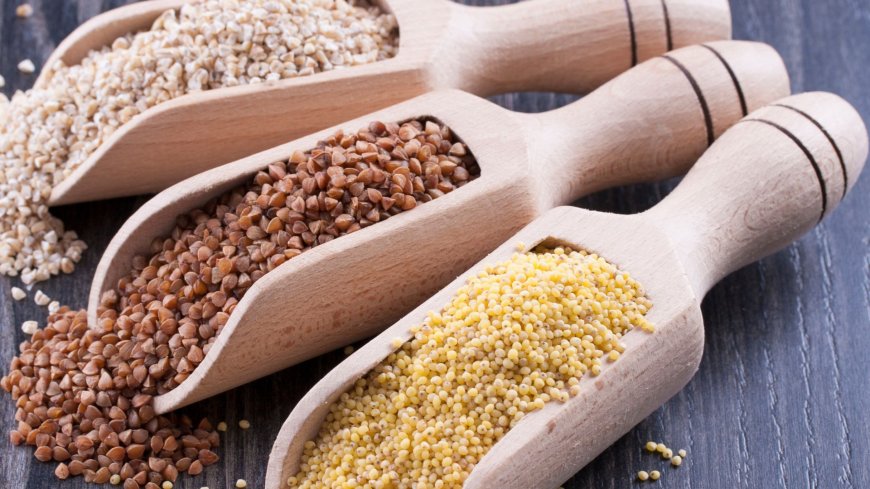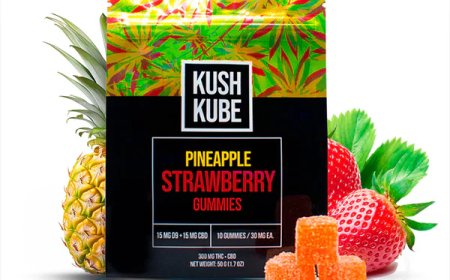Global Millets Market to Reach USD 18.65 Billion by 2033 – Superfood Trend and Government Support Drive Strong Growth
According to the latest insights from Renub Research, the Global Millets Market was valued at USD 11.15 Billion in 2024 and is projected to grow at a CAGR of 5.88%, reaching USD 18.65 Billion by 2033.

Rising Health Awareness, Climate-Resilient Farming, and Government Backing Fuel the Future of Millets
According to the latest insights from Renub Research, the Global Millets Market was valued at USD 11.15 Billion in 2024 and is projected to grow at a CAGR of 5.88%, reaching USD 18.65 Billion by 2033. This growth is propelled by rising consumer interest in health-conscious diets, increased governmental and international support, climate resilience of millet crops, and expanding product innovations.
? Explore Full Report Here: Global Millets Market Forecast 20252033
Millets Emerge as the Superfood of the Future
Milletsancient grains such as sorghum, pearl millet, finger millet, and foxtail milletare regaining global attention for their exceptional nutritional profile, sustainable cultivation, and versatility in food applications. Once considered a staple in traditional agrarian diets, millets are now making a strong comeback in both developing and developed economies.
Often termed as Smart Food, millets are gluten-free, rich in fiber, protein, iron, calcium, and essential micronutrients. Their low glycemic index makes them ideal for managing diabetes and cardiovascular diseases. Moreover, their drought resistance and low input requirements align them with climate-smart agriculture goals, contributing to food security in vulnerable regions.
Key Growth Drivers for the Global Millets Market
1. Rising Health Consciousness and Lifestyle Changes
The modern global consumer is increasingly inclined toward nutritious, natural, and functional foods. With the rise of chronic health issues like diabetes, obesity, and digestive disorders, millets are being embraced as healthier alternatives to conventional grains such as rice and wheat.
Millennials and Gen Z, especially in urban areas, are seeking high-fiber, plant-based, and gluten-free options, making millets a preferred ingredient in breakfast cereals, health bars, bakery products, and ready-to-eat meals.
2. Government and Institutional Promotion
2023 was declared the International Year of Millets (IYM) by the United Nations at Indias proposal, dramatically boosting global awareness and policy-level support. Governments in India, Nigeria, Kenya, and several Southeast Asian nations have rolled out incentive programs, minimum support prices, procurement schemes, and public distribution efforts for millets.
Moreover, school meal programs, food security missions, and agriculture subsidies are further encouraging millet production and consumption.
3. Sustainability and Climate Resilience
Millets are incredibly resilient to harsh climates, requiring less water, fertilizers, and pesticides compared to rice or wheat. Their ability to thrive in arid and semi-arid regions makes them a sustainable alternative in the face of climate change and global food insecurity.
With rising concerns around water scarcity, carbon footprints, and environmental degradation, millets are gaining recognition as a sustainable solution that benefits both producers and consumers.
4. Product Innovation and Mainstreaming
Food companies and startups across the globe are introducing millet-based innovations across categoriessnack bars, noodles, millet flours, infant nutrition, breakfast cereals, instant mixes, and even beer. The versatility of millets allows their integration into modern food trends without compromising taste or texture.
Celebrity chefs, influencers, and wellness brands are also promoting millet-based diets, increasing visibility and acceptance among mainstream consumers.
5. Growth in Organic and Plant-Based Food Markets
Millets align perfectly with the rising organic food and plant-based movement. Their natural resistance to pests reduces the need for chemical inputs, making them ideal for organic farming. As consumers shift toward sustainable, cruelty-free, and clean-label diets, millets are finding their way into vegan and vegetarian lifestyles worldwide.
Segmentation Analysis: Types, Applications, and Distribution Channels
By Type:
-
Pearl Millet (Bajra)
-
Finger Millet (Ragi)
-
Foxtail Millet
-
Proso Millet
-
Sorghum (Jowar)
-
Others (Kodo, Barnyard, Little Millet)
Pearl millet and sorghum dominate global production due to their adaptability to dry regions and large-scale cultivation in India and Africa. Finger millet is also gaining traction for its calcium-rich properties and usage in baby food and bakery applications.
By Application:
-
Food & Beverage Industry
-
Animal Feed
-
Personal Care & Cosmetics
-
Pharmaceuticals
-
Others (Biofuels, Industrial Uses)
The food & beverage segment is the largest, as demand for millet-based food products is rising across supermarkets, restaurants, health stores, and online platforms. Meanwhile, animal feed is emerging as a key use case, particularly in Asia and Africa, where millets are being used to create high-protein feed alternatives.
By Distribution Channel:
-
Supermarkets/Hypermarkets
-
Specialty Health Stores
-
Online Retail
-
Convenience Stores
-
Government Distribution Programs
Online retail is witnessing rapid growth, driven by the rise in D2C brands, e-commerce grocery portals, and health-food aggregators. Government programs also play a crucial role, especially in India and Africa, in making millets available to lower-income populations.
Regional Insights: India and Africa Lead, Europe and North America Catching Up
Asia-Pacific
India is the undisputed global leader in millet production and consumption. States like Rajasthan, Maharashtra, Karnataka, and Andhra Pradesh are major contributors. China and other Southeast Asian countries are also investing in millet farming as part of their food diversification and climate-resilient agriculture strategies.
Africa
Millets are a traditional staple in Nigeria, Ethiopia, Sudan, and Niger. With the support of global organizations like FAO and IFAD, millet cultivation is being scaled up as part of food security initiatives. African governments are also exploring millet exports to the EU and Middle East.
North America
In the U.S. and Canada, millets are gaining traction in the organic and health food segments. With increasing awareness and rising immigrant populations from Asia and Africa, demand for millets is expected to grow in mainstream and ethnic grocery stores.
Europe
Europe is a growing market, particularly in Germany, the UK, and France, where gluten-free and sustainable food movements are strong. EU nations are investing in R&D to explore millet farming as an alternative to water-intensive crops.
Competitive Landscape: Strategic Investments and Branding Shape Market Dynamics
The global millet market is highly competitive, with players ranging from local cooperatives and agricultural collectives to multinational food corporations and startups.
Key Companies:
-
Nestl S.A.
-
ITC Limited
-
24 Mantra Organic
-
Orgrain India Pvt Ltd
-
Just Organik
-
Slurrp Farm
-
Kelloggs (millet-blended cereals)
-
Cargill Inc.
-
Natureland Organics
-
Agrowave
Companies are focusing on:
-
Millet-based ready-to-eat (RTE) products
-
Branding around sustainability and health
-
E-commerce distribution and direct-to-consumer models
-
Collaborations with governments and NGOs for millet promotion
-
Export strategies targeting the Middle East and Europe
Future Outlook: Millets Poised to Become a Global Staple
Millets are expected to play a vital role in the future of food, particularly in the context of:
-
Climate-smart agriculture
-
Nutritional security
-
Plant-based food innovation
-
Export diversification for emerging economies
Policy support, consumer education, investment in value chains, and market access will be crucial to ensure the long-term success and mainstreaming of millets.
? For complete insights and strategic analysis, access the full report here:
? Millets Market Report Renub Research
New Publish Report:
- Saudi Arabia Ready Drink Tea and Coffee Market Size and Share Analysis - Growth Trends and Forecast Report 2025-2033
- Morocco Ready Drink Tea and Coffee Market Size and Share Analysis - Growth Trends and Forecast Report 2025-2033
- Israel Ready Drink Tea and Coffee Market Size and Share Analysis - Growth Trends and Forecast Report 2025-2033
About the Company
Renub Research is a Market Research and Consulting Company with more than 15 years of experience, especially in international Business-to-Business Research, Surveys, and Consulting. We provide a wide range of business research solutions that help companies make better business decisions. We partner with clients across all sectors and regions to identify their highest-value opportunities, address their most critical challenges, and transform their businesses.
Our wide clientele includes key players in Healthcare, Travel & Tourism, Food & Beverages, Power & Energy, Information Technology, Telecom & Internet, Chemicals, Logistics & Automotive, Consumer Goods & Retail, Building & Construction, and Agriculture.
Our core team comprises experienced professionals with graduate, postgraduate, and Ph.D. qualifications in Finance, Marketing, Human Resources, Bio-Technology, Medicine, Information Technology, Environmental Science, and more.
Media Contact
Company Name: Renub Research
Contact Person: Rajat Gupta, Marketing Manager
Phone No: +91-120-421-9822 (IND) | +1-478-202-3244 (USA)
Email: rajat@renub.com
































